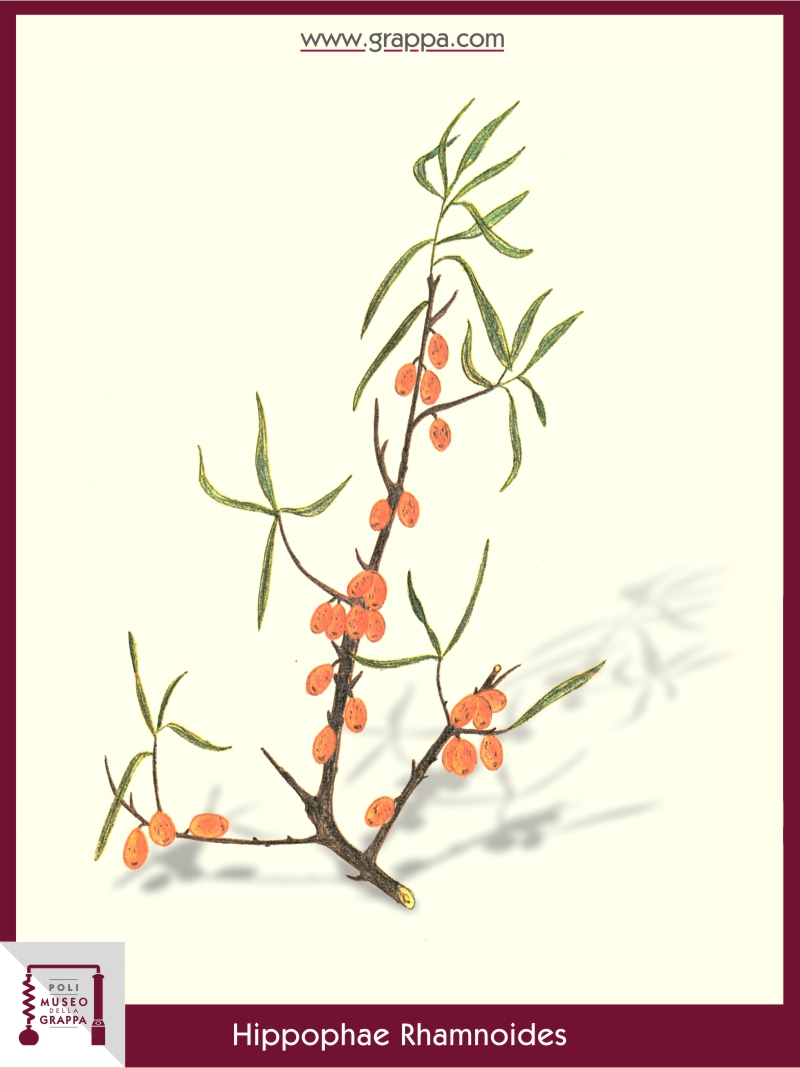Thirst-quenching
- Plant: Common Sea-Buckthorn (Hippophae Rhamnoides)
- Plant part: fruit
- Plant feauters: astringent, vulnerary, antioxidant, anti-inflammatory, tonic, antiseptic, thirst-quenching, vitaminizing, vasoprotective

-
Description:
The common sea-buckthorn, a shrub that is vaguely similar to the willow that has red-orange berries in late fall, was especially known in the Nordic countries, areas where the plant is spread with relative ease.
According to the testimony of Linnaeus, the populations of these countries prepared with the concentrated juice of the berries a sauce that was used to flavor their big salmons.The use of this fruit, almost unknown in the past in our country, began to be studied by the industry in the early 20th century. It was in fact during the First World War that the Germans picked a large amount of sea buckthorn, which was located at the edge of the Piave, to distribute it to the troops as energy.
Subsequent studies confirmed this indication highlighting a significant amount of vitamin C contained in the "drupe" of the buckthorn.
It is in fact the vitamin C that gives the Grappa, obtained by buckthorn, this sour taste which makes it almost "refreshing."
-
Note:
Fortunately the common sea-buckthorn is not listed as a potentially toxic plant, except - of course - for sensitive people.
In case of kidney stones, the consumption of fruits or derivatives of the buckthorn is not recommended: vitamin C, in fact, can promote the excretion of oxalates.
The recipe
-
Ingredients:
- 2 cups of fruits of sea buckthorn
- 1 liter of Grappa -
Preparation:
The fruits must be picked in late autumn, after the first frost, and left to macerate in Grappa for about two months in a sunny place.
Just two glasses of fruit for one liter.
After filtration other 6 months are necessary for the aging that will strengthen the sour taste and give an orange-red color to the liquor.
Poli Distillerie and
Poli Grappa Museum
Newsletter
Subscribe our newsletter to keep up to date with our latest news.